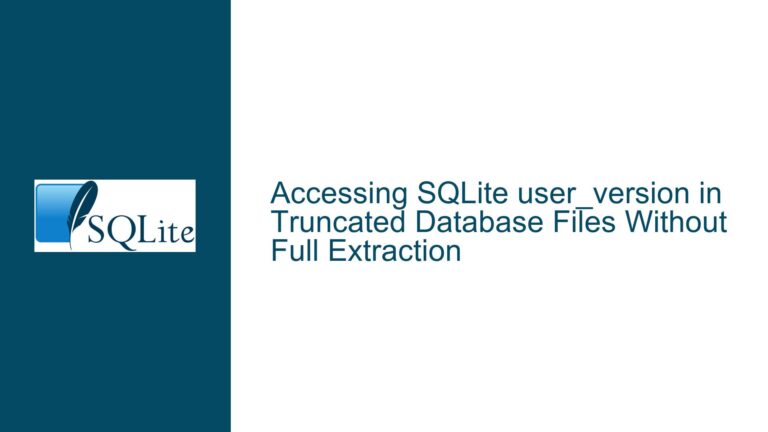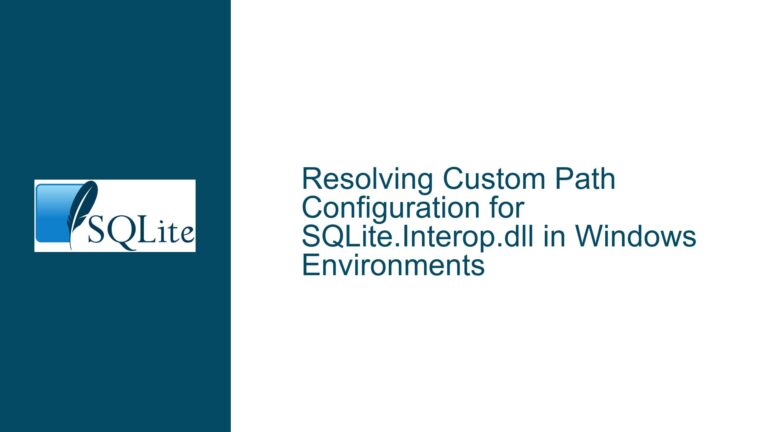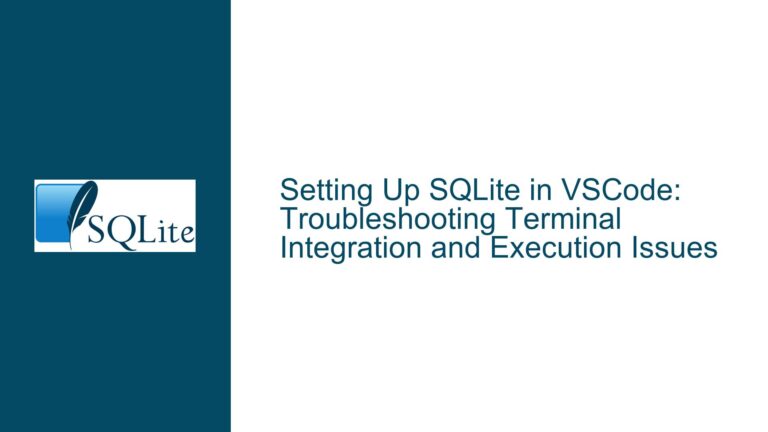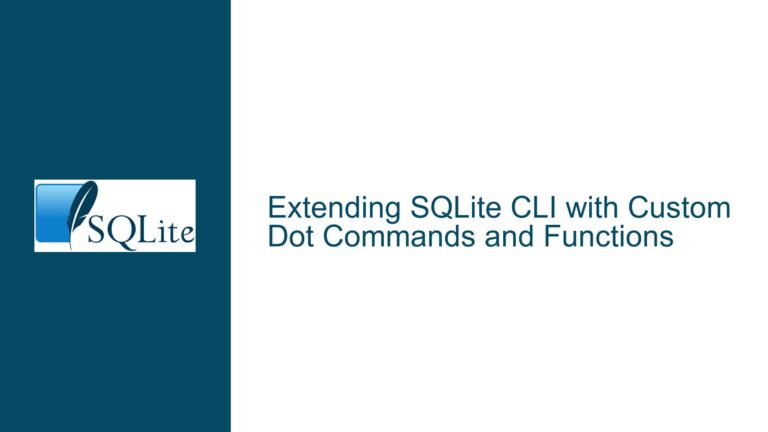Ensuring Forward Compatibility in SQLite Virtual Table Structs
Understanding SQLite Virtual Table Structs and Versioning Concerns
SQLite’s virtual table mechanism is a powerful feature that allows developers to create custom table-like structures that can be queried using SQL. At the heart of this mechanism are several key structures, including sqlite3_vtab, sqlite3_vtab_cursor, and sqlite3_index_info. These structures are designed to be subclassed by developers to add private fields and implementation-specific details. However, a common concern arises when considering how to ensure that code written against these structures remains forward-compatible with future versions of SQLite that might introduce new members to these structs.
The core of the issue lies in the fact that C, the language in which SQLite is implemented, does not enforce strict type safety or versioning at the struct level. Unlike higher-level languages that might provide built-in mechanisms for versioning or runtime type checking, C relies heavily on conventions and disciplined programming practices to ensure compatibility. This can lead to uncertainty, especially for developers who are not deeply familiar with C’s nuances, about how to write code that will not break when SQLite evolves.
The Role of iVersion and Struct Subclassing in SQLite
The iVersion field in the sqlite3_module structure is often misunderstood in this context. This field is intended to handle versioning at the module level, ensuring that extensions written for a specific version of SQLite can be identified and handled appropriately. However, it does not address versioning within the individual structs like sqlite3_vtab or sqlite3_vtab_cursor. These structures do not include a version or size field, which might lead developers to wonder how future changes to these structs will be managed without breaking existing code.
The typical pattern in SQLite is to subclass these structures by embedding them as the first field in a custom struct. For example, a JsonEachCursor struct might start with a sqlite3_vtab_cursor base class, followed by additional private fields. This approach allows SQLite to treat the custom struct as if it were a sqlite3_vtab_cursor, while still giving developers the flexibility to add their own data. However, this pattern does not inherently provide a mechanism for handling future changes to the base structs.
Ensuring Forward Compatibility in Custom SQLite Extensions
To ensure forward compatibility, developers must adopt a disciplined approach to struct design and version management. One common practice is to avoid relying on the internal layout of the base structs beyond what is explicitly documented. By treating the base structs as opaque and only accessing them through the provided API functions, developers can insulate their code from changes to the internal structure.
Another important consideration is the use of versioned interfaces. While SQLite itself does not provide a built-in mechanism for versioning within the structs, developers can implement their own versioning scheme. This might involve adding a version field to the custom struct and using conditional compilation or runtime checks to handle different versions of the struct. For example, a custom sqlite3_vtab subclass might include a version field that is checked at runtime to determine how to interpret the rest of the struct.
Best Practices for Struct Design and Version Management
When designing custom structs for SQLite virtual tables, it is crucial to follow best practices that minimize the risk of incompatibility with future versions of SQLite. One such practice is to always place the base struct as the first field in the custom struct. This ensures that the memory layout is compatible with SQLite’s expectations and reduces the risk of alignment or padding issues.
Additionally, developers should avoid making assumptions about the size or layout of the base structs. Instead, they should use the provided API functions to interact with these structs and only access fields that are explicitly documented as part of the public API. This approach not only enhances forward compatibility but also makes the code more maintainable and easier to understand.
Another best practice is to document the versioning strategy clearly and consistently. If a custom struct includes a version field, this should be clearly documented, along with any changes that might affect the interpretation of the struct. This documentation should be part of the codebase and should be updated whenever the struct is modified.
Handling Future Changes to SQLite Structs
While SQLite’s developers are committed to maintaining backward compatibility, it is still possible that future versions of SQLite might introduce changes to the virtual table structs. To handle such changes, developers should adopt a proactive approach to version management. This might involve regularly reviewing the SQLite documentation and release notes for any changes that might affect their code.
In some cases, it may be necessary to maintain multiple versions of a custom struct to support different versions of SQLite. This can be achieved through conditional compilation or runtime checks that select the appropriate version of the struct based on the version of SQLite in use. While this approach can add complexity to the code, it provides a robust mechanism for ensuring compatibility across different versions of SQLite.
Conclusion: Writing Robust and Future-Proof SQLite Extensions
Ensuring forward compatibility in SQLite virtual table extensions requires a combination of disciplined programming practices, careful struct design, and proactive version management. By following best practices and avoiding assumptions about the internal layout of SQLite’s structs, developers can write code that is robust, maintainable, and compatible with future versions of SQLite.
While C’s lack of built-in versioning mechanisms can be challenging, the flexibility and control it provides also offer opportunities for creative solutions. By adopting a thoughtful approach to struct design and version management, developers can create SQLite extensions that stand the test of time and continue to function seamlessly as SQLite evolves.
In summary, the key to ensuring forward compatibility in SQLite virtual table structs lies in understanding the conventions and best practices that underpin SQLite’s design. By adhering to these principles and adopting a proactive approach to version management, developers can write code that is not only compatible with current versions of SQLite but also resilient to future changes. This ensures that their extensions remain functional and reliable, even as SQLite continues to evolve and improve.






